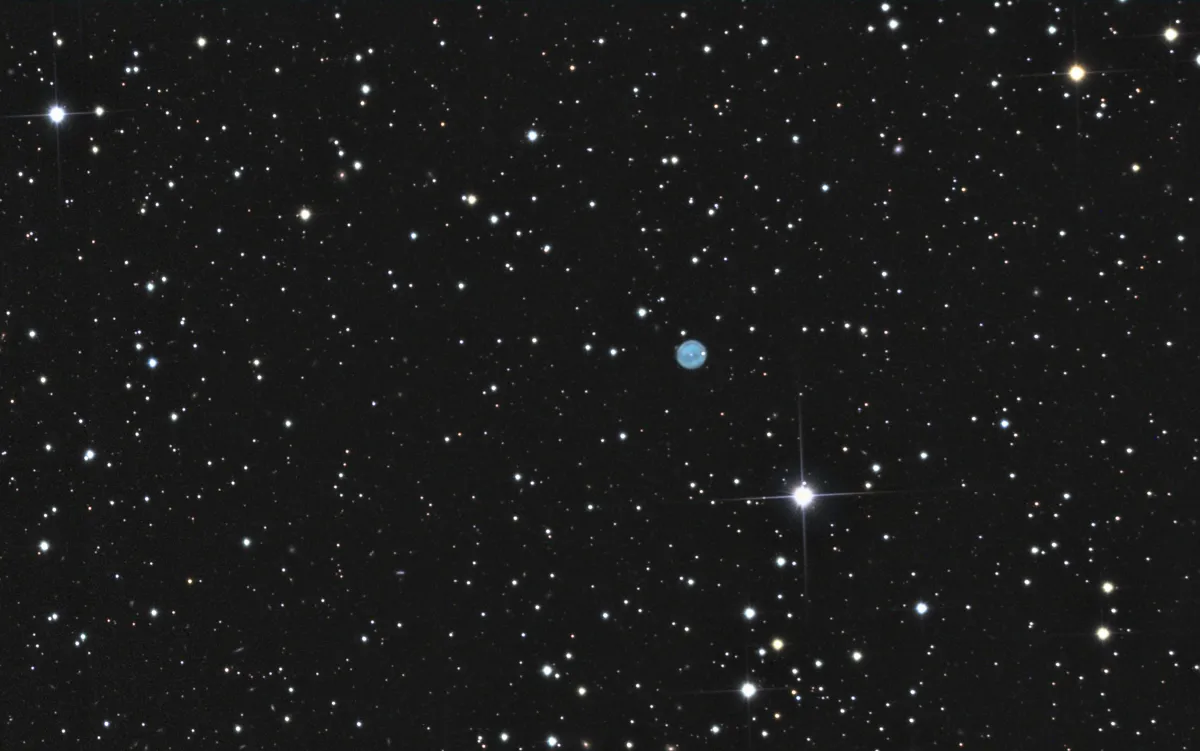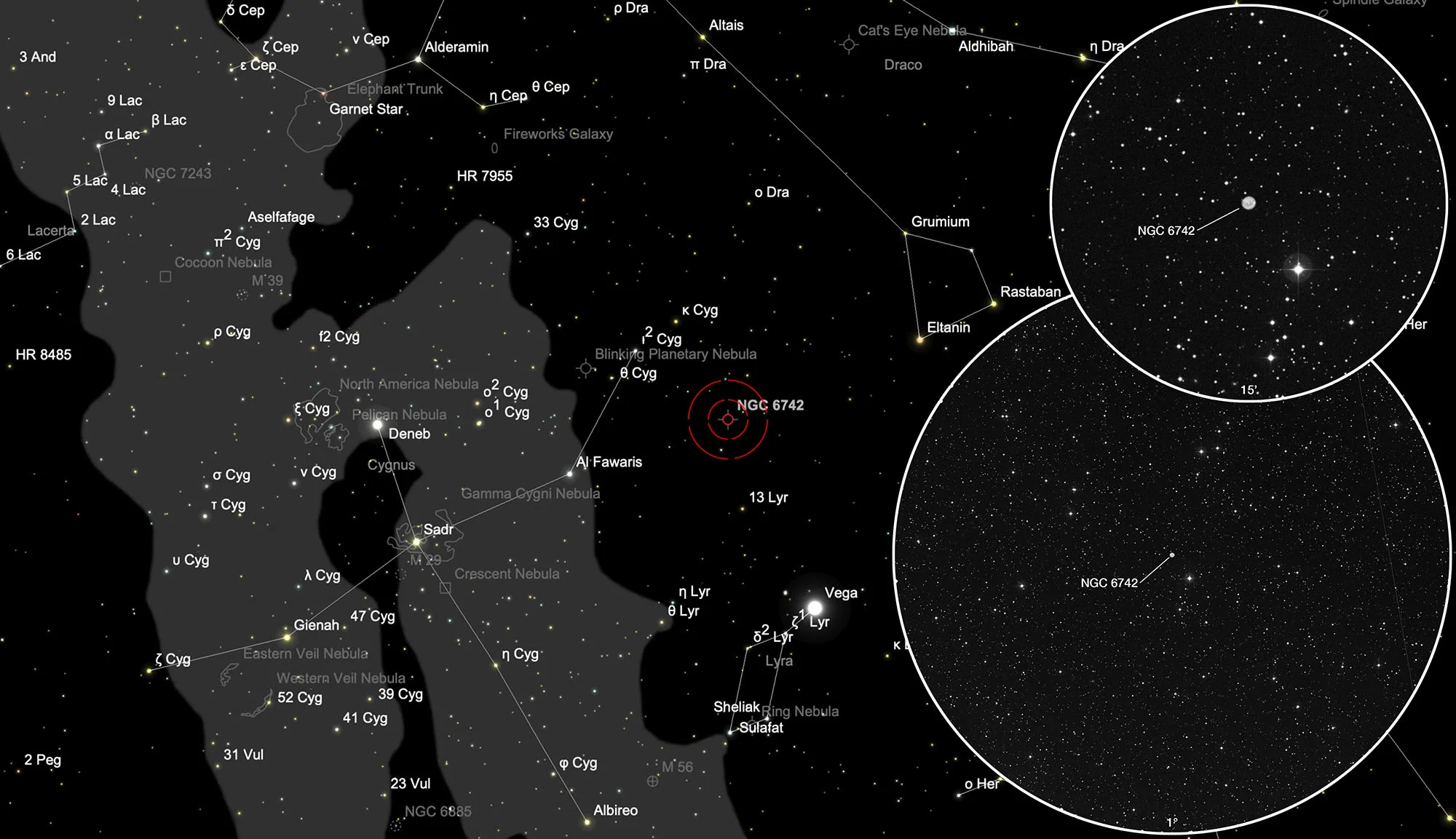Planetary Nebula NGC 6742

History
Nebula NGC 6742 was discovered by William Herschel on 8th July 1788 and also observed by Heinrich d'Arrest on 24 September 1862. John L. E. Dreyer described the nebula as very faint and stellar. George Ogden Abell then identified NGC 6742 as his 39th planetary nebula (A55 39) on the «Palomar Observatory Sky Survey» (POSS) photoplates in 1955 and then listed it as No. 50 in his list of 86 on the POSS photoplates in 1966 discovered PNs (A66 50). The PN Abell 50 should not be confused with the galaxy cluster Abell 50 (ACO 50) of the same name in the constellation Cetus. [196, 331, 332]
Physical Properties
The distance is given as 5091 pc (about 16'600 light years) and the visual apparent magnitude as 16.5 mag. The central star is of the spectral type O(H)III-V [145]
| Designations | PN G078.5+18.7: A 50, PK 78+18.1, A55 39, NGC, 6742, VV' 472 |
| Right Ascension (J2000.0) | 18h 59m 21s a |
| Declination (J2000.0) | +48° 28' 14" a |
| Dimensions | 27." (optical) |
| Radial Velocity | -159.0 ± 11.0 km/s |
| C-Star Designations | AG82 338 |
| C-Star Magnitude | B: 20.0 |
| Discoverer | ABELL 1955 |
Finder Chart
Planetary nebula NGC 6742 is located in the constellation Draco, near the border of Lyra and Cygnus. In Central Europe it is circumpolar. On 6 July it is in opposition to the Sun and crosses the meridian at local midnight. The best observing time is March to December, when the PN is highest in the night sky.
